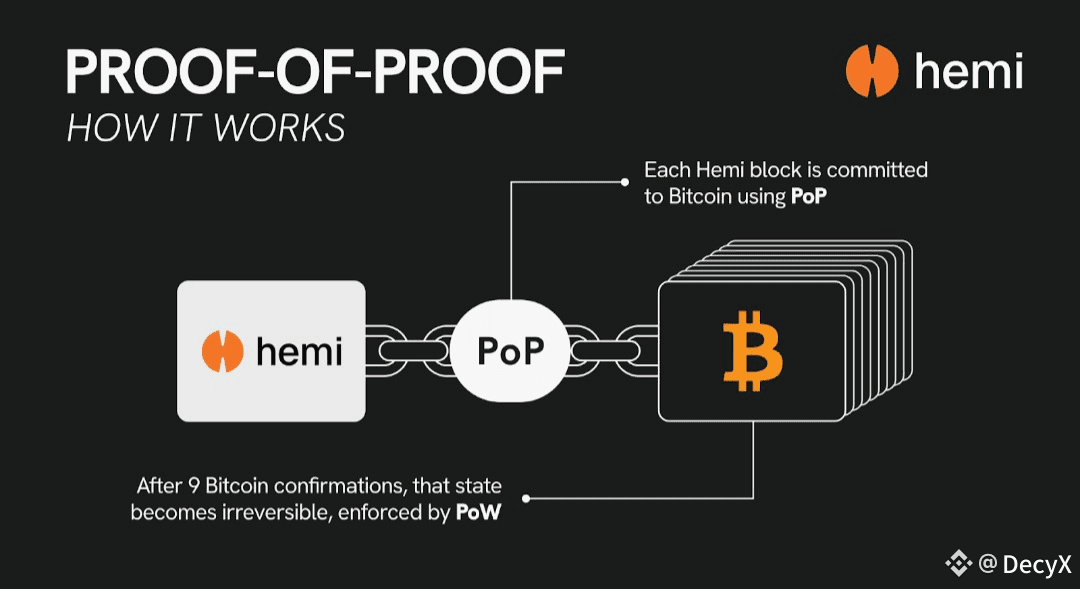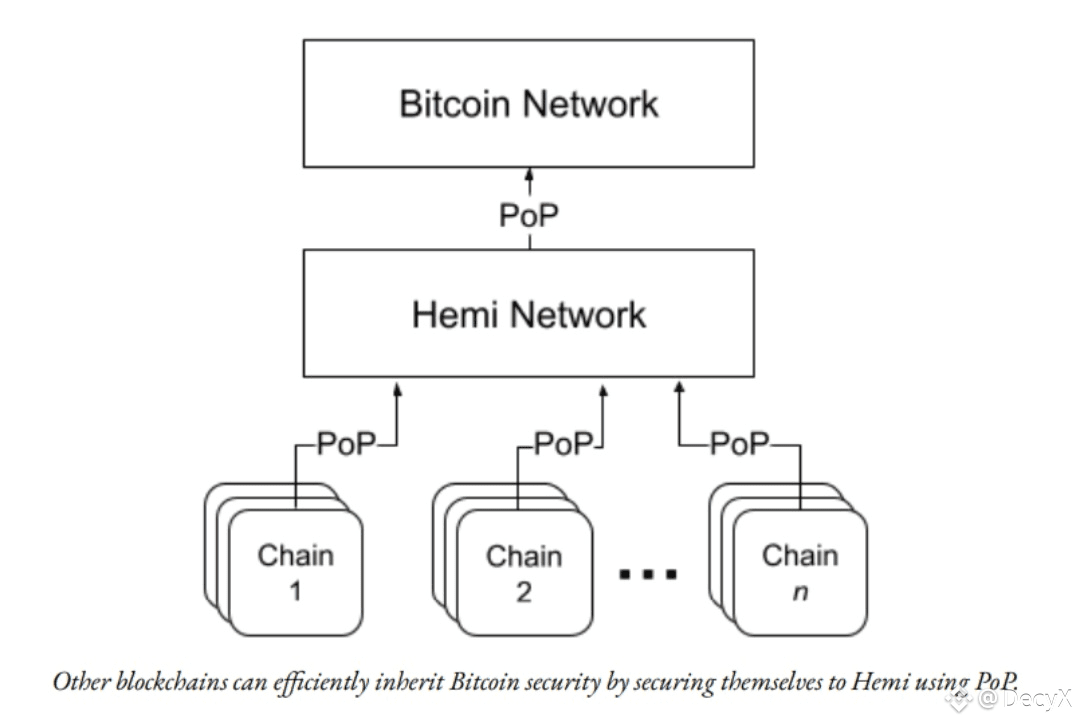Hemi is transforming the foundation of blockchain interoperability by enabling seamless communication, liquidity synchronization, and data flow between diverse ecosystems. In a landscape where digital assets are scattered across multiple chains, Hemi brings unity through advanced routing mechanisms, modular design, and decentralized validation. It aims to remove the friction that limits Web3 growth, allowing blockchains to interact as one cohesive environment.
The Core Vision of Hemi
Hemi was built with a bold vision, to create a frictionless multi chain world where users, developers, and institutions can interact across blockchains without barriers. The protocol focuses on connecting liquidity and data through decentralized infrastructure, replacing the need for centralized intermediaries. Instead of building isolated systems, Hemi bridges value and logic between ecosystems, ensuring that every transaction, swap, or data transfer is secure, transparent, and instantaneous.
Decentralized Cross Chain Architecture
At the core of Hemi’s design is its decentralized cross chain architecture. Unlike traditional bridges that rely on centralized custodians, Hemi uses cryptographic proofs and decentralized validators to confirm transactions between chains. Each message or asset transfer is verified through consensus mechanisms that maintain trust across networks. This design not only enhances security but also eliminates the risk of single points of failure. By distributing verification across a global validator network, Hemi achieves a balance between speed and reliability, essential for scalable blockchain communication.
Liquidity Routing and Optimization
Liquidity fragmentation has long been a challenge in decentralized finance. Hemi addresses this by introducing a liquidity routing system that identifies the most efficient paths for transactions across chains. Instead of relying on one liquidity pool, Hemi aggregates liquidity from multiple networks, ensuring that swaps and transfers happen at optimal rates. This optimization creates a more efficient financial layer where users benefit from reduced slippage, faster execution, and improved access to liquidity across DeFi protocols.
The Role of Modularity in Hemi’s Ecosystem
Modularity plays a vital role in Hemi’s scalability. The protocol separates core components such as transaction validation, routing logic, and liquidity aggregation into independent modules. This modularity allows Hemi to evolve without disrupting the entire system. Developers can upgrade individual components or integrate new blockchain standards seamlessly. As new technologies like Layer 2 rollups or zero knowledge proofs emerge, Hemi can adopt them swiftly, ensuring long term adaptability in the ever changing blockchain environment.
Security Through Decentralized Validation
Security is at the heart of Hemi’s architecture. Every cross chain transaction is verified by decentralized validators who operate under an incentive model to ensure accuracy and honesty. The system uses a combination of threshold signatures and cryptographic proofs to guarantee data integrity. Hemi eliminates the reliance on trusted relayers, creating a fully trustless and transparent communication layer. This design provides users with confidence that their assets and data remain secure, regardless of the number of networks involved.
Developer Accessibility and Integration Ease
Hemi prioritizes developer experience by offering an easy to use SDK and APIs that simplify cross chain integration. Developers can connect their applications to multiple blockchains without managing complex infrastructure. Hemi handles routing, validation, and communication in the background, allowing developers to focus on building user experiences. This simplicity accelerates the pace of innovation, helping startups and established protocols alike to expand their reach across multiple ecosystems.
Interoperability Beyond Asset Transfers
Hemi goes beyond just transferring tokens between chains. It enables cross chain messaging, contract calls, and data synchronization. This functionality allows decentralized applications to share state information across different blockchains. For example, a DeFi protocol on Ethereum can interact with a liquidity pool on another chain through Hemi’s communication layer. This interoperability expands possibilities for decentralized systems, transforming isolated blockchains into interconnected components of a unified digital economy.
Scalability and Performance Optimization
Scalability is achieved in Hemi through efficient off chain processing and proof aggregation. Instead of processing every interaction directly on chain, Hemi batches and validates transactions off chain, then submits proof of execution to the main networks. This drastically reduces gas costs and network congestion. By balancing on chain finality with off chain computation, Hemi ensures rapid processing without compromising decentralization or transparency.
Real World Use Cases of Hemi
Hemi’s technology has applications across multiple sectors of Web3. In DeFi, it provides a backbone for cross chain liquidity aggregation and trading optimization. In NFTs and gaming, Hemi enables asset portability, allowing players to use and trade their digital assets across networks. For enterprises, Hemi supports secure data exchange and asset tokenization, bridging traditional systems with decentralized infrastructure. Each use case highlights Hemi’s ability to streamline processes while maintaining verifiable trust.
Economic Model and Token Utility
The Hemi ecosystem operates on a sustainable economic model centered around its native token. The token is used for transaction fees, validator incentives, and governance participation. Validators stake tokens to secure the network and validate cross chain activity, earning rewards for their contribution. Users pay small fees for cross chain operations, which circulate within the ecosystem to support growth and sustainability. This balanced model ensures long term stability while aligning incentives among participants.
Community and Governance Framework
Hemi embraces decentralized governance to ensure transparency and adaptability. Community members and token holders have the power to propose and vote on protocol upgrades, fee models, and validator policies. This governance structure creates a collaborative ecosystem where users actively shape the platform’s evolution. The participatory model not only builds trust but also encourages innovation driven by real community needs.
Sustainability and Energy Efficiency
Hemi emphasizes sustainability through lightweight validation and off chain computations that reduce network strain. Its architecture minimizes redundant operations, conserving energy while maintaining high throughput. By using modular proof systems and efficient consensus mechanisms, Hemi achieves environmental sustainability without sacrificing performance. This aligns the protocol with the global shift toward eco friendly blockchain solutions.
Challenges and Continuous Innovation
As Hemi continues to evolve, it faces challenges related to maintaining synchronization across multiple chains and optimizing validator coordination. The development team consistently explores cryptographic advancements and communication protocols to enhance efficiency. Research into dynamic routing, state compression, and privacy preserving interoperability ensures that Hemi remains at the forefront of innovation. These ongoing efforts demonstrate Hemi’s commitment to continuous improvement and technological excellence.
User Experience and Adoption
User experience is a major focus within Hemi’s roadmap. The protocol is designed to make cross chain interactions feel as natural as single chain transactions. By reducing wait times, simplifying interfaces, and automating routing, Hemi ensures users enjoy frictionless experiences. As adoption grows, integrations with wallets, DEXs, and decentralized applications will further enhance accessibility, driving mass adoption across the Web3 ecosystem.
The Role of Hemi in the Future of Web3
Hemi represents a major step toward achieving full blockchain interoperability. As more networks emerge, the need for unified communication becomes critical. Hemi’s decentralized approach ensures that this connectivity happens securely and efficiently. By connecting liquidity, assets, and logic across ecosystems, Hemi turns blockchain from a collection of isolated silos into a connected digital infrastructure capable of supporting global-scale applications.
Conclusion
Hemi is not just another interoperability solution, it is the foundation for a unified Web3. Its combination of modularity, security, and efficiency creates a network where assets and information can move freely across chains. By enabling real time, decentralized communication between ecosystems, Hemi breaks down barriers that have limited blockchain scalability and usability. As the demand for interconnected systems grows, Hemi stands as a key enabler of the next evolution in decentralized technology, driving a future where all blockchains operate together as one harmonious ecosystem.